Any long-running, photo fundraising project requires a lot of time and organization, but the
challenges you’ll face will be well worth all of your efforts. It will not only be an enriching
experience, but it can provide a venue for improving your photo skills, along with the
ultimate reward of helping to raise funds for your chosen organization.
“Shelter” became my labour of love–a photo book of dogs and cats
adopted from DCH Animal Adoptions in Sydney, Australia.

© 2011 Cathy Topping. All rights reserved.
Background to the Photo Book Project
In 2011 I approached DCH Animal Adoptions, a local animal rescue charity that specialises in rescuing, fostering and re-homing abandoned dogs, cats and horses. I was interested in doing some free photography for their animals in foster care, partly to help out, and partly to improve my pet photography skills–a new genre that I had recently decided to explore in more depth.
Since my initial idea of creating an annual fundraising calendar was already being handled by another photographer, one of the co-founders of DCH had an idea for a project that was a bit more involved. She suggested creating a book of photo portraits and stories of DCH success stories–adopted animals that had found their forever loving homes.

© 2011 Cathy Topping. All rights reserved.
I was instantly taken with the idea. I loved the thought of not only taking the photographs, but discovering more about each animal’s story and journey, and beyond that, the larger over-arching story of the rescue group itself.
After some preplanning, we decided on approaching 40 contributors (pet owners who adopted pets) who would pay for inclusion in the book, thus generating funds to offset the cost of publishing the book. Anything above that amount, along with the sales from the book, would go towards the DCH long-term fundraising project to create a physical shelter for abandoned animals, which, incidentally, is why the book is being called “Shelter”. Yes, it made financial sense for DCH to move forward.
© 2011 Cathy Topping. All rights reserved.
Working on the Details
It was time to sit down and started thinking about how I was going to tackle the task at hand, and it was then that I really saw the scale of the project. There were going to be 40 photo sessions, but each session had up to four pets. Not only did I have to look at the time needed to create all of the images, but I also had to think about the written portion of the book, as well as the layout and graphic design.
I was fortunate to have found a writer, a graphic designer and a proof-reader who agreed to help out. Without the expertise and assistance of this invaluable team, I would not have been able to complete the project.
Planning the Photo Sessions
Forty separate photography sessions at forty separate locations and up to four animals per session…
To complete all the of photos, I decided to focus on getting as many sessions completed each weekend as I could manage. I tried to co-ordinate the photographs for families who lived in suburbs near to each other, so that I could fit in two or three sessions into a single day.
I also needed to co-ordinate whether I was taking photos of dogs or cats. Luckily, there were a number of cats for the book, so I found that I could schedule an indoor photograph with a cat or two, and then head out to meet a dog in the beautiful late afternoon light.

© 2011 Cathy Topping. All rights reserved.
The Photo Session
Meeting so many animals on such a regular basis really taught me a lot about photographing animals in a very short space of time. One key aspect of pet photography that I learned very quickly was that, although a small minority of animals really enjoy the attention, generally our canine and feline companions can be just as camera shy as their humans.
© 2011 Cathy Topping. All rights reserved.
I always allowed about an hour for the sessions, but rarely used that much time. If we were down at a park, and the dog could run around and play, then it could go on indefinitely. But, for the key images, the ‘portraits’ that I was looking for, it required the dogs and cats to sit still and put up with the camera being pointed at them. Often, I would only get a 10 minute window. Treats and toys obviously worked their magic, but too much of either would clearly cause some confusion. Eventually, they would turn their back on me, or subtly turn their head away from the camera. It was quite endearing to witness, as we can all relate to not enjoying having a camera pointed at us.
© 2011 Cathy Topping. All rights reserved.
© 2011 Cathy Topping. All rights reserved.
Lenses
The key lenses I used for this project were a 35mm f2.0, a 50mm f1.8, an 85mm f1.8 and a 70-200mm f2.8. The combination of focal lengths and aperture from these 4 lenses helped me to refine my vision for the type of images I wanted to create for this book.
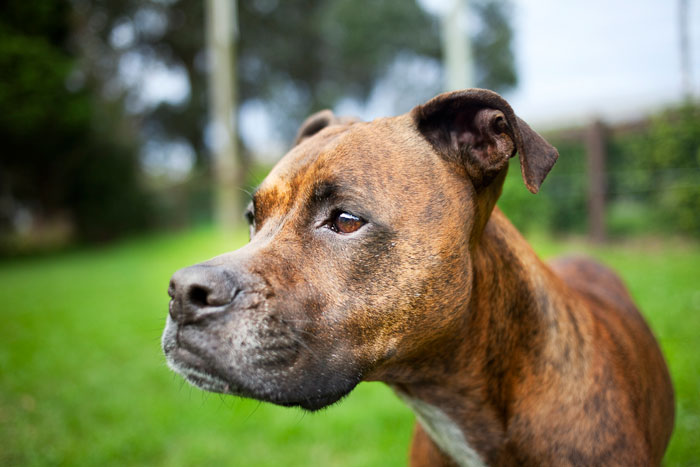
© 2011 Cathy Topping. All rights reserved.
Copyright © Cathy Topping 2010 All rights reserved.
Copyright © Cathy Topping 2010 All rights reserved.
Copyright © Cathy Topping 2010 All rights reserved.
The 35mm lens is one that I would never use when photographing people. However, the slight wide angle distortion tends to give dogs and cats a young, cute look, providing a very pleasing effect and feel to the portraits. It did require me to get really close to the animals, so I had to become very adept at working quickly and efficiently.
The 50mm lens came in handy for many of the indoor photographs. In an apartment or house, there is rarely enough room for the distance required to use longer focal lengths. I also used this lens for some of the photos which incorporated people with their animals.
I used the 85mm for creating a different style of portrait and the longer reach meant I could photograph from further away. This took some of the pressure off both myself and the animals and gave them some space to relax. I love the effect of the background blur and pin-sharp eyes that I can achieve with this lens.
The 70-200mm was used mainly for capturing the animals playing and being themselves. I was able to move away from their personal space and let them run around and burn off energy. I would also encourage the families to interact with their pets while I was further away, so I could concentrate on capturing candid moments.
TIPS FOR PHOTOGRAPHING PETS
Ask for Assistance
In all of the photographs for this project I engaged the families in the process, asking for help to get their animals in position for their photographs.
Dogs will respond to commands from their “human pack leader” and are much more willing to trust you if it is obvious to them that you are trusted by their human, so I would ask the mum or dad to stand next to me and give the commands to their dog..
Holding treats and a camera at the same time can be a difficult juggling act, so I would have the owner hold a delicious treat just above or below the lens. The pet’s look of adoration that was captured in some of the portraits was often elicited by this little trick.
Cats are a different challenge altogether, so I had to rely on quick instincts. Their innate curiosity often meant they were more willing to look directly at the camera lens, but they also got bored with it very quickly. As with all photography, and perhaps more so with animals, it is vital to know your camera settings extremely well. You may only get a couple of moments to make the image you’re seeking and you can’t afford to waste that time fumbling with the camera.
© 2011 Cathy Topping. All rights reserved.
Get down on Their Level
Photographing animals from above can produce some great photos, but get creative and change your angle of photographing to get different view points. Lie down on the grass or on the floor with them. Photograph from underneath with the sky or trees as a background. Add depth to the shot by incorporating some foreground into the composition.
Move into the Shade
As when photographing people, ideally you want low-contrast light falling onto the animals. If it is an overcast day, then enjoy nature’s soft-box, and take advantage of all the gorgeous, even light. But if it’s a sunny day with high contrast of the light and shadows, the best course of action is to move into the shade.
Capture the Catch Light
If you pay careful attention to the direction from which the light is coming and position the animal accordingly, you will be able to get catch-lights in their eyes (the highlight in a subject’s eye created by a light source). This detail adds life and personality to a portrait.
Copyright © Cathy Topping 2010 All rights reserved.
Pick the Right Time of Day
As with most genres of photography, early morning and late afternoon provides the best light if you are photographing outside. If the dog is running around and playing in the open space of a park, there will still be some contrast between lights and shadows, but they will be softened. The color at these times of day will also lend itself to beautiful images. And late afternoon light creates wonderful long shadows that can be incorporated into your compositions.
Find Interesting Backgrounds
Be creative in finding useable and different backgrounds. Grass is always a safe bet, but if you can find something with a different look and texture, it can really add interest to the image.
The bark at the base of trees in many parks is one of my firm favorites. I’ve also used textured driveways and paths, sandstone, rocks at the beach, sand, carpet, and the sky. Use your imagination and you will be surprised how many interesting backgrounds can be created from everyday surfaces.
Find Creative Ways to Include People
For this project, some people were happy to be photographed with their pet, while others were not keen on participating at all. I did want to find a way to include people in some of the photographs to add a personal touch to the stories, so I needed to come up with some ideas on how to achieve this.
If there were children in the family I would try to include them where possible. Although, small children plus dogs or cats increases the level of challenges exponentially!
I experimented with focusing on the animal and hinting at the people in the photographs, by including only part of their bodies as they stood next to their animal. Another approach was using a shallow DOF to soften the background, to create a composition focused on the animal, while still including the people.
© 2011 Cathy Topping. All rights reserved.
Be Patient and Have Fun
Photographing animals brings its own set of rewards and challenges. I generally tackle my sessions in spurts–taking a group of shots and then putting the camera down for a bit. Give them a break to have a run around (and take the opportunity to use a longer focal lens) or to have a rest and relax.
I do genuinely love dogs and cats, so I would use the breaks from taking pictures to try to get to know them and get them to trust me. If I’m honest, my favorite part of the whole experience on these photographs was simply spending time with so many lovely animals.
Finally, it is important to know when to stop. This particular project involved only rescued animals and many of them had gone through traumatic experiences before they were successfully re-homed. Spending time in a pound can be extremely upsetting for the animals and sometimes they never completely get over it. And sadly, some of them were exposed to cruelty at the hands of previous owners and are still learning to trust humans again. If I felt that the whole experience was getting too strange and upsetting for the animal, I would simply call it a day. Even if I felt that I hadn’t gotten the best image possible, I don’t believe that it’s worth upsetting a sensitive animal in pursuit of the perfect photograph.
© 2011 Cathy Topping. All rights reserved.
In Conclusion
Working on this book has been one of the most challenging, exhausting and yet, creatively satisfying pieces of work I have created to date. Finding people to help with the writing and design has helped enormously, and allowed me to focus on the aspect of the project which is my real strength – the photography.
Working consistently and with such focus on this project has really honed my skills in a way that I haven’t experienced before. I feel that my photography has benefited enormously.
I would highly recommend finding a long-term project to work on to help refine and build on your photographic skills. And if, like me, you decide to create a book – you will have a tangible piece of work to show for all the hard work when you are finished.
by Cathy Topping
Article and photos: © 2012 Cathy Topping. All right reserved.

Leave a Reply